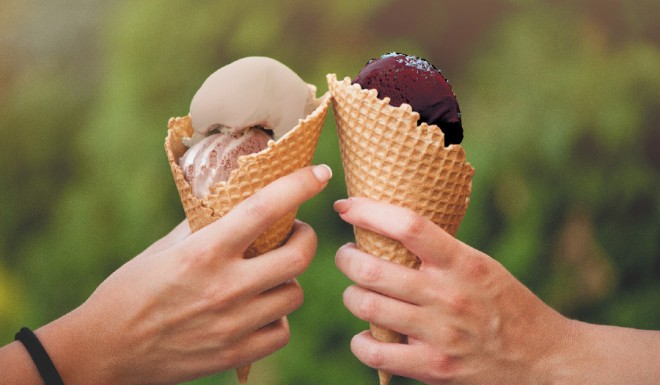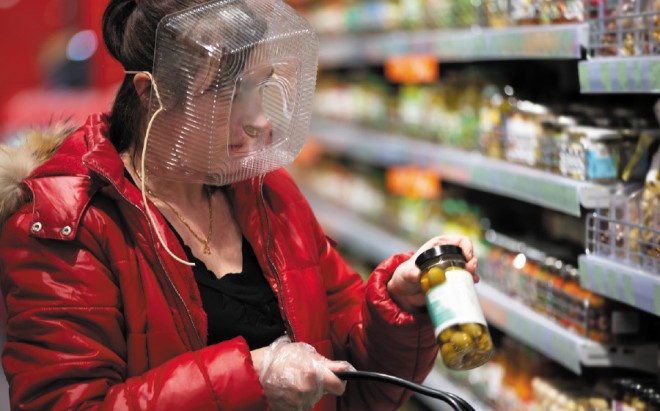
Change of Habit
New research at HKUST shows that fear of infection increases consumers’ preference for atypical options.
[Sponsored Article]
Synergis-Geoffrey Yeh Professor of Business,
Chair Professor of Marketing,
HKUST Business School

Questions such as these have become particularly relevant in recent times as COVID-19 rages across the world, making it ever-more important for marketers to understand how infection-related cues shape consumer behavior. Indeed, such cues, albeit less starkly threatening than the pandemic, have always been present, whether they arise from a family member coming down with the common cold, or being exposed to a coughing stranger, or even a fleeting glimpse of a hospital ward on a TV show.
Despite their ubiquity, very little research has examined how such disease cues affect consumers’ product preferences, a gap that my student HUANG Yunhui (now an assistant professor at Ohio State University) addressed in her PhD dissertation carried out under my guidance. Our research, which has been accepted for publication in the Journal of Consumer Research, shows that even relatively innocuous reminders of infection exert a systematic effect on product preference by increasing consumers’ relative preference for atypical versus typical product options. In the example above, therefore, we predict that you will become more likely to choose the cherry dark chocolate after hearing about your sick friend.
Evolutionary theory and customer preferences
We based our predictions on an evolutionary theory which argues that because of the millennia-old threat to survival posed by infectious diseases, a “psychological immune system” has evolved in human beings. This system helps to protect us against diseases by inducing us to seek out objects and individuals that seem linked to good health, while alerting us to avoid those that seem linked to bad health.
For instance, being reminded of infectious diseases increases a preference for individuals with symmetric faces – the evolutionary basis being that symmetric faces are associated with good health. On the flip side, and even at the risk of over-reaction, disease cues cause people to avoid individuals with superficial markers of ill-health, such as obesity or facial scars, despite these markers not connoting any actual disease (see Murray and Schaller 2016 for a review of these and related findings).
How does this translate to consumer preferences? We argued that typical products, like the chocolate ice-cream mentioned in the opening example, are associated in consumers’ minds with “more people” than atypical products like the cherry dark chocolate flavor. This is because of the greater market share generally claimed by typical products.
The reason this “more people” association matters is that the defense mechanism that is such a vital part of the psychological immune system causes humans to avoid other people in general, since other humans are a prime source of infectious diseases (Mortensen et al. 2010). Combining these insights therefore, we predicted that simply being made aware of the threat of infectious diseases will cause consumers to enhance their preference for atypical as compared to typical products, because of the former’s association with fewer people compared to the latter.
Note that this is not a “rational” tendency. It is not the case that a typical product, such as the chocolate ice-cream, actually represents a source of infection (it’s not like anyone else has tasted it, for example). However, as with many behaviors based on evolutionary adaptation, our predicted consumer behavior is not necessarily rational. It simply arises from an instinctive aversion to other people when the environment triggers reminders of disease threat.
We obtained support for this prediction across a series of experimental studies which were conducted with diverse sets of participants, including Hong Kong undergraduate students, American adults, and adults in mainland China. In a typical experiment, participants were randomly assigned to a condition which involved reminders of disease threat, (e.g., by providing slideshows depicting individuals with disease symptoms, or via a news report on a recent infectious disease), or a condition that involved other types of physical threat (e.g., slideshows depicting traffic accidents and other such hazards), or a control no-threat condition (e.g., an article describing how best to organize one’s workspace).
Participants then filled out a series of measures, the most critical of which involved them choosing between a product that was either typical or atypical of its category. Different products were examined across studies, including juices (orange juice vs. pomegranate juice), stuffed toys (a bunny vs. a dragon), a computer mouse (a typically shaped mouse vs. an atypically shaped mouse), and sets of plates (again, typically shaped vs. atypically shaped). Across studies, we found strong support for our prediction that those exposed to a disease threat display greater preference for an atypical product over a typical product, as compared to those exposed to other types of threat, and also to those exposed to no threat at all.
Diluting the bias
Can this bias towards atypicality be diluted? The theoretical reasoning that underlies the effect suggests some answers to this question. If it is indeed the case, as we argue, that it is the instinctive wish to avoid infectious diseases that causes consumers to prefer atypical products, then the effect should no longer be observed if the threat of infection can be reduced in some way.
We identified three different ways of doing exactly this: varying the nature of the disease; varying the nature of an intervention between disease threat and product choice; and varying the nature of the product. First, the threat should be reduced if the disease is explicitly described as being non-infectious, as a non-infectious disease should not induce avoidance of other people, and therefore not cause an aversion to typical products.
Second, if people are allowed to take some action to minimize the threat, even if they simply imagine having access to an antiseptic handwipe after being exposed to the disease threat, they should be less afraid of infection, and therefore no longer stay away from typical products.
Third, if the nature of the product is such that there is very little possibility of getting infected by using it, for example, a set of plates that is intended as a wall decoration rather than as dinnerware, the fear of infection should no longer apply when considering the purchase of the product. Indeed, a series of studies that tested these arguments found strong support for each of them.
The boundaries of our effect provide useful information as to why the effect occurs in the first place. Namely, it is the fear of infectious diseases that drives the aversion to products mentally associated with more people. At the same time, the findings across studies provide extensive support for the effect itself: disease threat in general increases preference for atypical as compared to typical products.
Not only do these findings illustrate a novel aspect of consumer behavior, they offer straightforward implications for practitioners. They suggest, for instance, that managers should consider marketing novel, atypical product offerings, rather than typical offerings, in disease-prone environments. Advertisements for relatively atypical products might also be more effective if shown in the context of programming that carry reminders of disease, for instance, hospital dramas.
Finally, given that sales of typical products are reduced by disease cues, managers might want to include natural fluctuations of pathogen load across time and geographic locations in their forecasting models for typical/mass product offerings. These applied implications are of particular importance at the present moment, given the ongoing pandemic threat.
Preference for unusual ingredients
At the same time, a caveat is in order. Our research was completed before the onset of the COVID-19 pandemic. We cannot therefore conclusively assert that these findings will hold in the current environment. Indeed, given the severity and the immediacy of the pandemic, especially compared to the kind of disease cues that were featured in our studies, other possibilities cannot be ruled out.
For instance, given the intensity of the current threat, it might be that consumers crave safe, “default” options, and this could actually translate to a greater preference for typical rather than atypical products. This is a possibility we are currently exploring.
Interestingly, however, market research carried out in supermarkets in the UK provides some indicatory evidence that our results may hold in the COVID-19 context as well. A recent article in Bloomberg News reported that during the pandemic-triggered lockdown in the UK, consumers were found to have significantly increased purchases of relatively unusual ingredients for food (e.g., kimchi) and drinks (e.g., the use of tequila in home-made cocktails). This ties in with our prediction that a disease-active environment will increase relative preference for atypical products.

Apart from further exploring these issues, my co-author and I are currently exploring other consumption consequences of disease threat. One interesting consequence derives from the well-established finding that social connections and monetary resources are often interchangeable. We argued therefore that disease threat, because it leads to people-avoidance, should conversely enhance the value of money, and thereby lower consumer spending.
Another interesting implication of the people-avoidance motive is that disease threat should lower a liking for anthropomorphized products, that is, products that contain humanlike features (precisely because of their resemblance to humans). Encouragingly, early results from our lab support both these ideas.
In closing, disease cues have the potential to affect consumer behavior in a variety of ways, including non-obvious ones. Despite the prevalence of disease cues in our environment, and their tremendous potential impact on all aspects of human life, their influence on consumption has not been adequately studied. Our research represents a step in this direction, one that we hope provides the platform for further insight into an area which has unfortunately been emphasized by recent events.
https://academic.oup.com/jcr/advance-article/doi/10.1093/jcr/ucaa029/58…
References
Mortensen, Chad R., D. Vaughn Becker, Joshua M. Ackerman, Steven L. Neuberg, and Douglas T. Kenrick (2010), “Infection Breeds Reticence: The Effects of Disease Salience on Self-Perceptions of Personality and Behavioral Avoidance Tendencies.” Psychological Science, 21 (3), 440-47.
Murray, Damian R., and Mark Schaller (2016), “The Behavioral Immune System: Implications for Social cognition, Social interaction, and Social influence,” Advances in Experimental Social Psychology, 53, 75-129.
